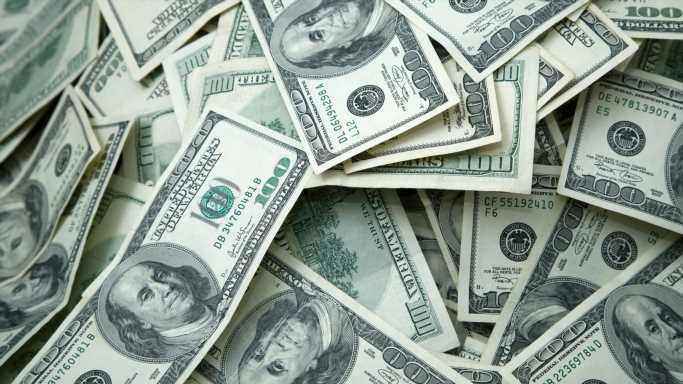US banks took out a combined $164.8 billion in loans from two Federal Reserve backstop facilities this week, including the Fed’s discount window used to alleviate liquidity concerns faced by banks. The discount window surged to $152B from $4.58B the previous week, a new all-time high beating the last high of $111B reached amid the 2008 financial crisis.
The record borrowing comes in the wake of Silicon Valley Bank’s collapse and the subsequent closure of Signature Bank, which sent shock waves across the financial markets.
US Regulators Announce Emergency Measures to Avert a Banking Crisis
Silicon Valley Bank, one of the most popular lenders to Silicon Valley tech and growth startups, failed late last week after a run on the bank. According to a filing by the DFPI, depositors initiated $42 billion in withdrawals from SVB on March 9, pushing the bank into a negative cash balance of almost $1 billion.
Subsequently, the Federal Deposit Insurance Corporation (FDIC) took control of the bank. While this was already bad news for the American banking system, depositors got another shock after regulators, including the Federal Reserve and the US Treasury Department, closed Signature Bank over the weekend, citing systematic risks.
In a bid to avert a banking crisis and restore confidence in the banking system, regulators announced a raft of emergency measures on Sunday. The US Federal Reserve, Treasury Department, and the FDIC announced they would use the FDIC’s insurance funds to prevent depositors from losing money.
“Depositors will have access to all of their money starting Monday,” the regulators said in a joint statement. Meanwhile, the Fed introduced a new Bank Term Funding Program (BTFP), offering additional funding to eligible depository institutions.
Banks Rush to Borrow from the Fed
According to Fed statistics released Thursday, banks worried about liquidity borrowed a combined $164.8 billion from two Federal Reserve backstop facilities in the face of SVB’s collapse, topping a record set during the 2008 financial crisis.
More specifically, banks took out $152.85 billion in loans from the discount window in the week ended March 15. In comparison, banks only borrowed $4.58 billion the previous week.
The data also showed that financial institutions borrowed $11.9 billion from the Fed’s recently-launched emergency backstop known as the Bank Term Funding Program. The FDIC also lent out $142.8 billion to bridge banks for SVB and Signature Bank.
Furthermore, a group of America’s largest banks has pledged to deposit $30 billion into First Republic Bank, which is facing a crisis of confidence from investors and customers. The $30 billion infusion will help the San Francisco lender to meet customer withdrawals amid a tumultuous week for banks.
The recent saga around US lenders has forced the Fed to consider announcing stricter capital and liquidity requirements for midsize banks. Specifically, the central bank is reviewing steps to ramp up annual “stress tests” that assess banks’ ability to stay buoyant.
How Fed’s Lending Program Can Help it Fight Inflation
The Fed is facing a difficult decision regarding whether to move on with its planned 50 basis points rate hike in the wake of strong inflation data and the collapse of three US banks.
However, some analysts have suggested that the Fed’s new lending program could further help the central bank in efforts to reduce its massive balance sheet. That is because a key part of the Fed’s lending program is to swap bonds owned by banks for cash.
If those bonds end up on the central bank’s $8.4 trillion balance sheet, they could act as a complement to the rate hikes the Fed has delivered in its battle to curb inflation, according to analysts at research firm Wrightson ICAP. They added:
“The more advantageous financial terms of the new Fed facility could divert a substantial amount of borrowing from the (Federal Home Loan Banks) and boost the size of the Fed’s balance sheet. (T)he long-awaited liquidity squeeze resulting from the Fed’s asset runoffs could be delayed yet again.”
Sponsored: Find a Qualified Financial Advisor
Finding a qualified financial advisor doesn’t have to be hard. SmartAsset’s free tool matches you with up to 3 fiduciary financial advisors in your area in 5 minutes. Each advisor has been vetted by SmartAsset and is held to a fiduciary standard to act in your best interests. If you’re ready to be matched with local advisors that can help you achieve your financial goals, get started now.
Source: Read Full Article
-
Why Investors Need to Take Advantage of These 2 Basic Materials Stocks Now
-
5 Sizzling ‘Strong Buy’ Stocks, Including a Potential AI Home Run, That Fast Money Traders Are Snapping Up Now
-
Ten-Year Yield Reaches Eleven-Year High
-
Opening Bell Analysts Research Calls for Tuesday, February 28
-
Unusual Options Activity: COIN, LCID, AAPL and 6 Others

